Time:2025-01-10 17:59:45 Number of Clicks:
The mobile shiploader, as a critical equipment in modern ports and cargo terminals, is capable of being customized according to the different material and vessel requirements. The chute, as a key component of the mobile shiploader, plays a significant role in determining the loading quality of materials and the environmental performance.
The chute is installed at the head of the mobile shiploader arm, primarily used to transfer bulk materials from the mobile shiploader to the cargo hold of the ship. The chute's design and form can vary depending on factors such as the physical properties of the material, the ship's draft, and changes in the terminal water levels. A proper chute configuration can maximize loading efficiency and reduce material waste.
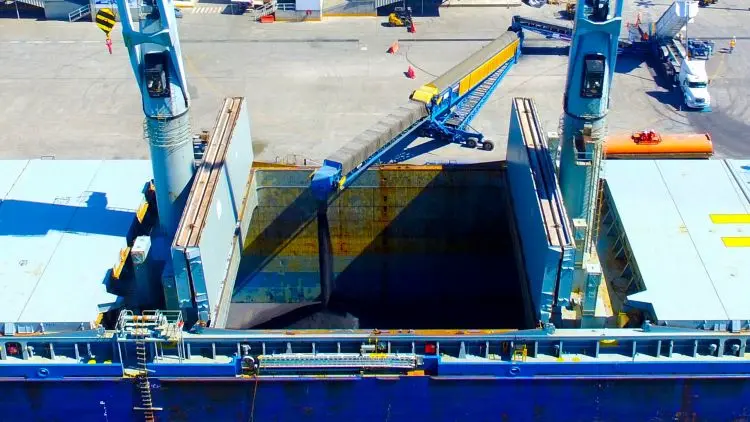
The guide plate chute, also known as a non-solid chute, does not have a physical chute body. Instead, it uses adjustable guide plates to direct material from the mobile shiploader to the ship's hold. It is ideal for small open barges or ships with large hatches, and is well-suited for loading denser materials such as ores. The advantages include no clogging concerns and high loading efficiency with low maintenance. However, it lacks functions for leveling and cushioning, which may result in significant impact on material drop and poor environmental performance.
The straight chute is the most common type, featuring a fixed length and is not adjustable. It is widely used for loading ores, coal, cement, and sand. This type of chute can be equipped with a swinging mechanism that keeps it in a vertical position during the mobile shiploader's arm pitching. The lower part of the chute can be equipped with a thrower to help level the load in the cargo hold. Since the length of the chute is fixed, it must be designed to match the ship's hold size and the mobile shiploader's moving conditions.
The telescopic chute is one of the most commonly used chutes today, suitable for loading a wide range of bulk materials. The telescopic design allows the chute's length to be adjusted based on the ship's size and water levels, accommodating large-span material loading needs. The chute outlet is designed to be close to the bottom of the cargo hold to reduce dust emissions. The telescopic mechanism typically involves a winch system, and the telescopic sections are equipped with positioning slides to ensure smooth extension and retraction. The bottom of the chute can also be equipped with a thrower for leveling operations, especially useful when dealing with high water levels during empty loading and low water levels during full loading.
The zigzag chute is composed of multiple angled sections, each driven by steel cables. This design helps reduce the impact load when the material drops, making it ideal for loading materials that require cushioning. Compared to spiral chutes, the zigzag chute has a lower overall height, which is suitable for situations where high equipment heights must be avoided.
Spiral chutes are designed for loading materials that need protection from damage, such as grains and fertilizers. The spiral shape helps control the speed at which materials fall, preventing damage from rapid drops. However, spiral chutes have a fixed length and cannot be telescoped, so their design must be compatible with the mobile shiploader.
The sleeve chute consists of multiple interconnected tubular sections, which can be adjusted in length based on the loading requirements. This type of chute offers the flexibility to adapt to different ships and terminals, particularly useful in scenarios where frequent length adjustments are necessary. However, the sleeve chute tends to have poor sealing, which can lead to subpar dust control.
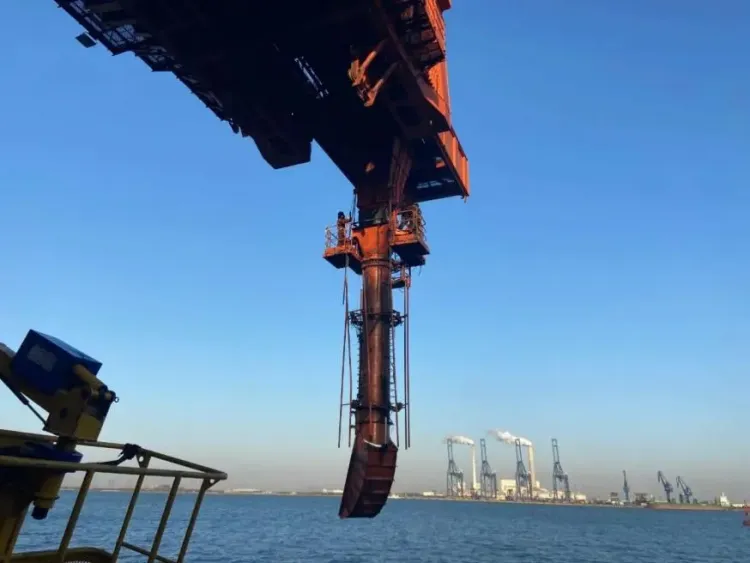
Steel chutes are the most commonly used type, suitable for most bulk materials. The chute body can be lined with various wear-resistant materials, such as welded steel plates or ceramic linings, depending on the hardness and abrasiveness of the materials being loaded.
Ceramic chutes are usually made from small ceramic cones and can be telescopic. The chute can be covered with fabric for environmental protection, and the cones interlock to form a zigzag delivery path, reducing wear. This design is suitable for bulk materials with low abrasiveness, providing longer service life and better dust control.
Fabric chutes are typically used for less abrasive materials such as fertilizers or feed. They are equipped with rubber dust curtains at the bottom, which cover the material's surface during operation to effectively prevent dust from spreading. Due to their soft components, the chute can adjust in height with the material pile, usually equipped with a height-sensing switch for automatic length adjustment based on the material stack height.
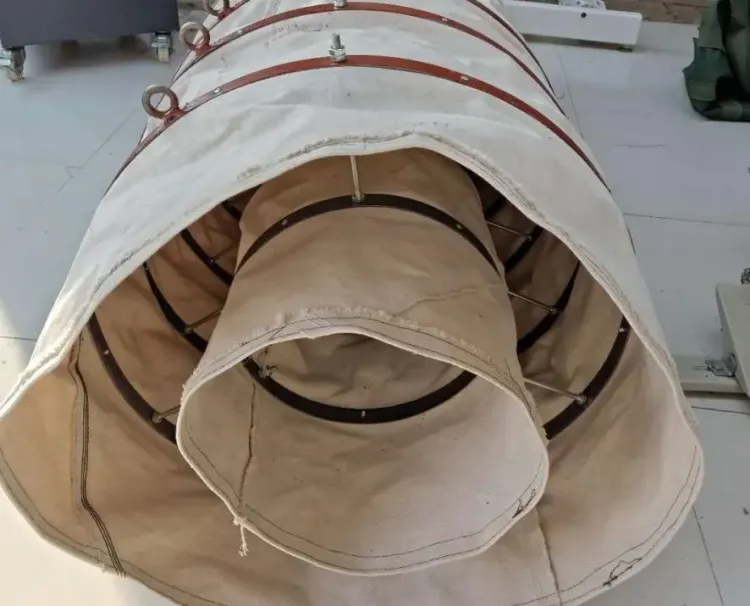
This type of chute does not include a dust collection device. It primarily relies on its structural features, such as skirt edges, to minimize dust emission. It is suitable for materials that generate relatively low levels of dust, such as pelletized feed or sugar.
This chute type utilizes water spraying or misting to control dust emissions, suitable for materials that are not sensitive to water, such as ores and coal. The misting system typically includes a water supply, storage, pressurizing system, air compressor system (for non-spraying systems), and spraying mechanisms.
Negative pressure dust collection systems are used for materials that cannot come into contact with water, such as grain, cement, or sugar. The dry dust collection system typically involves centralized negative pressure or individual bag dust collection systems, which may require a more complex setup and can be energy-intensive.
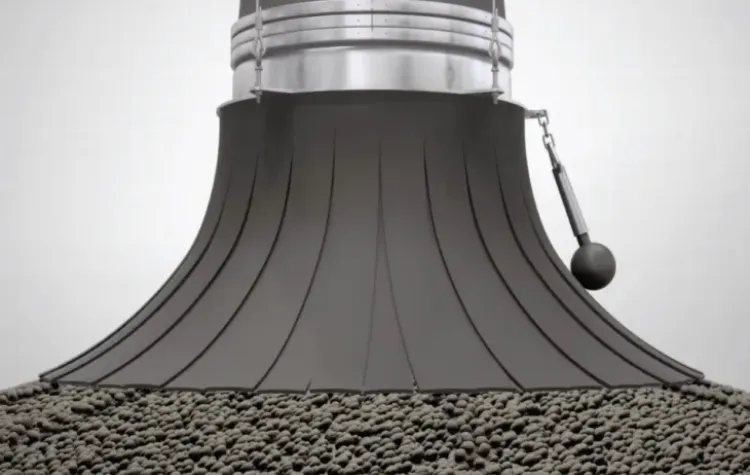
Non-throwing chutes do not feature thrower heads and are ideal for materials with good flowability. With proper chute design, the material can be evenly distributed in the cargo hold without additional throwing equipment for leveling.
This type of chute is suited for materials with low hardness and abrasion. It has a fixed throwing angle that allows for simple leveling operations in the hold.
This type is the most commonly used throwing system, applicable to various materials like ores, coal, fertilizers, and sulfur. The throwing head can be adjusted for leveling operations when required. The swing mechanism is typically driven by hydraulic cylinders or electric-hydraulic push rods to adjust the throwing angle for leveling operations.
Throwing machines are primarily used for materials with very poor flowability, such as wood chips or granular materials. The chute bottom is often equipped with a throwing machine to launch the materials into the cargo hold.
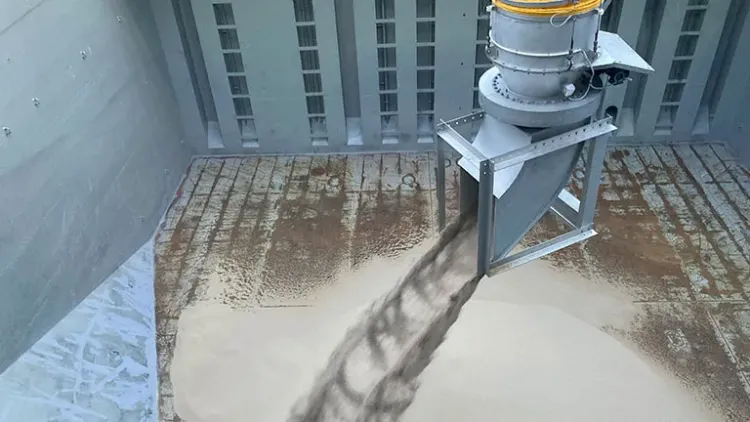
Choosing the appropriate chute form and material requires considering the physical characteristics of the material, such as hardness, particle size, and moisture content. Additionally, factors like the working conditions of the mobile shiploader, the size of the ship, and the changes in terminal water levels must be taken into account. By understanding these factors, the most suitable chute type can be selected to ensure efficient, safe, and environmentally friendly loading operations.
If you have any questions about the full analysis of mobile shiploader chutes and their types and functions, please contact us using the information below:
- https://www.zoomry-ind.com
- +86 131-6401-6717
Copyright © 2002-2024 Zoomry Group Company Limited